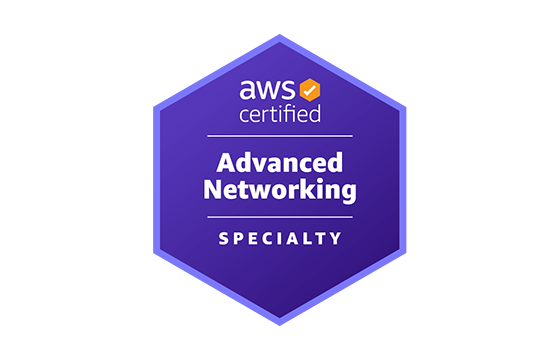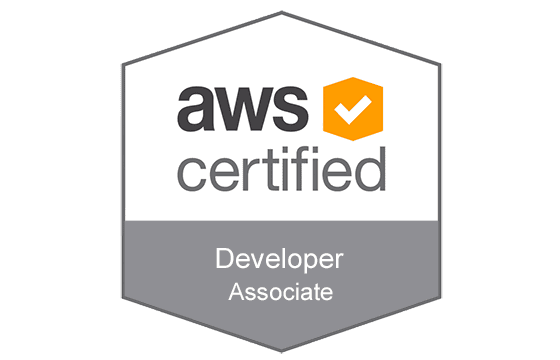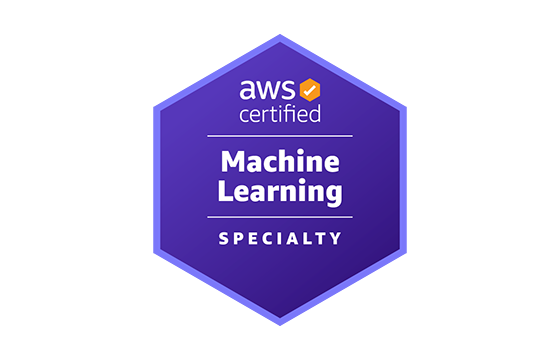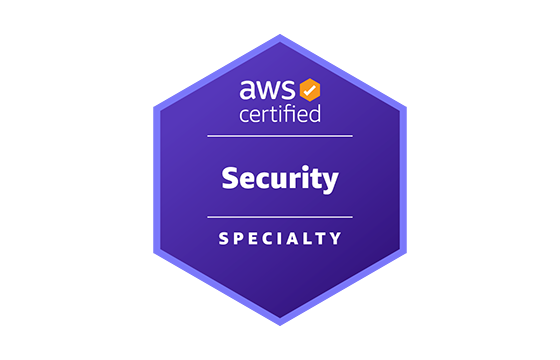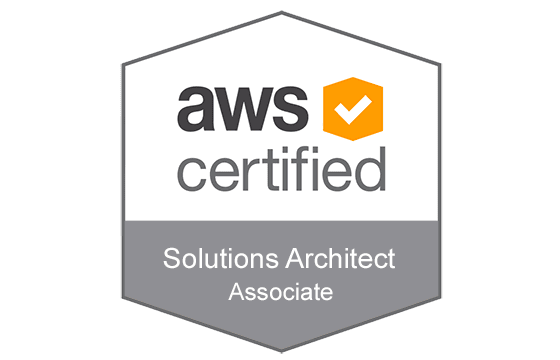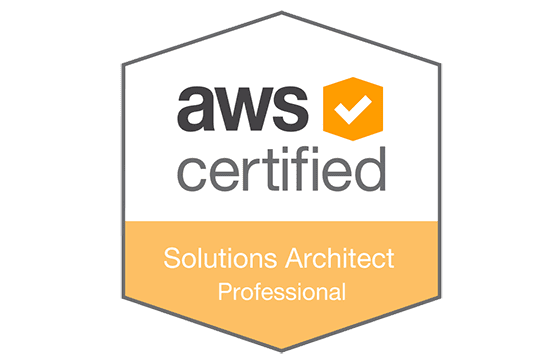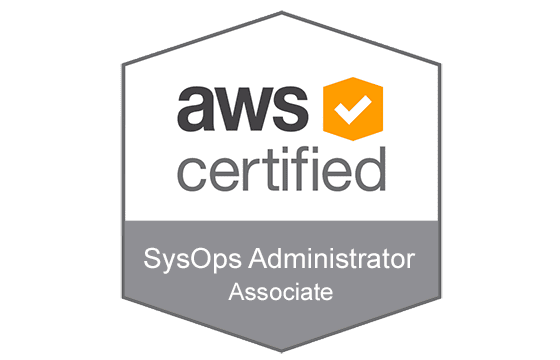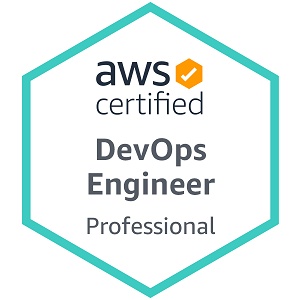Pass Your Amazon AWS Certified Developer - Associate Certification Easy!
Amazon AWS Certified Developer - Associate Certification Exams Questions & Answers, Accurate & Verified By IT Experts
Instant Download, Free Fast Updates, 99.6% Pass Rate.

AWS Certified Developer - Associate DVA-C02 Exam:
AWS Certified Developer - Associate DVA-C02
Includes 500 Questions & Answers
$69.99
Download Free AWS Certified Developer - Associate Practice Test Questions VCE Files
| Exam | Title | Files |
|---|---|---|
Exam AWS Certified Developer - Associate DVA-C02 |
Title AWS Certified Developer - Associate DVA-C02 |
Files 1 |
Amazon AWS Certified Developer - Associate Certification Exam Dumps & Practice Test Questions
Prepare with top-notch Amazon AWS Certified Developer - Associate certification practice test questions and answers, vce exam dumps, study guide, video training course from ExamCollection. All Amazon AWS Certified Developer - Associate certification exam dumps & practice test questions and answers are uploaded by users who have passed the exam themselves and formatted them into vce file format.
Amazon AWS Certified Developer - Associate Certification: Complete Guide to Exam, Skills, and Career Success
The Amazon AWS Certified Developer - Associate certification is a widely recognized credential for professionals seeking to validate their skills in building, deploying, and maintaining applications on the AWS cloud platform. Cloud computing has transformed the way organizations manage and deliver services, and AWS remains one of the most popular cloud service providers globally. With businesses increasingly moving workloads to the cloud, there is a growing demand for skilled developers who can create scalable, secure, and efficient cloud-based applications.
This certification is tailored for software developers, cloud engineers, and IT professionals with hands-on experience in AWS. It not only demonstrates technical competence but also reflects an understanding of best practices for developing cloud-native applications. Beyond simply confirming knowledge of AWS services, it assesses the ability to apply that knowledge in practical, real-world scenarios, including deployment, integration, monitoring, and debugging of applications.
Understanding the Role of an AWS Developer
An AWS developer works within the AWS ecosystem to design, build, and maintain applications that leverage cloud services. Unlike traditional developers, cloud developers must consider factors such as scalability, availability, cost optimization, and security when designing applications. The role requires knowledge of AWS services, programming skills, and the ability to automate workflows using cloud-native tools.
Core responsibilities of an AWS developer include:
Developing serverless and microservices-based applications using AWS Lambda, API Gateway, and ECS.
Managing data storage with services like S3, DynamoDB, and RDS.
Implementing security controls and access management through IAM.
Monitoring application performance using CloudWatch and troubleshooting issues with tools such as AWS X-Ray.
Integrating various AWS services to create seamless, decoupled architectures.
Proficiency in at least one programming language supported by AWS, such as Python, Java, or Node.js, is typically required. Developers also need a solid understanding of RESTful APIs, event-driven programming, and cloud-native design patterns. The AWS Certified Developer - Associate certification validates this combination of technical knowledge and practical skills.
Key Knowledge Areas Covered in the Certification
The AWS Certified Developer - Associate exam covers several core domains that are critical for cloud application development. Understanding these domains helps candidates focus their preparation and ensures they are equipped with the skills necessary for professional work in AWS.
AWS Core Services
Candidates must be familiar with key AWS services, including compute, storage, database, and messaging services:
Compute: AWS Lambda, Elastic Beanstalk, and EC2 are central to application deployment and serverless development. Understanding how to deploy applications using these services and optimize their performance is essential.
Storage: Knowledge of S3, EBS, and DynamoDB allows developers to select appropriate storage solutions based on cost, performance, and scalability. Each service has distinct use cases and limitations that must be understood.
Database Services: Familiarity with RDS and DynamoDB ensures that developers can create data-driven applications efficiently. This includes designing schemas, managing data access, and optimizing query performance.
Messaging Services: Services like SQS and SNS enable decoupling of components and event-driven architectures. Developers must know how to configure and integrate these services into applications.
Security and Compliance
Security is a critical component of cloud development. AWS developers need to implement identity and access management, encryption, and secure API practices. Understanding how to use IAM roles, policies, and key management services is necessary to ensure that applications remain secure and compliant with organizational or regulatory standards.
Application Development and Integration
The certification emphasizes the ability to develop applications that integrate multiple AWS services. This includes using APIs, SDKs, and AWS CLI to automate deployment, manage resources, and integrate third-party services when needed. Developers must also understand best practices for creating resilient and decoupled architectures to ensure high availability and fault tolerance.
Monitoring, Troubleshooting, and Optimization
Applications in the cloud require constant monitoring and optimization to maintain performance and cost efficiency. AWS developers use tools like CloudWatch to track metrics, X-Ray to trace requests and diagnose issues, and CloudTrail for auditing API calls. Understanding how to interpret these metrics and take corrective action is crucial for maintaining robust applications.
Benefits of Obtaining the Certification
Earning the AWS Certified Developer - Associate credential provides numerous advantages for professionals and organizations alike. The certification demonstrates technical competence, enhances credibility, and opens up opportunities for career growth in cloud development.
Professional Recognition
Achieving this certification signals to employers, clients, and colleagues that a developer has both theoretical knowledge and practical expertise in AWS. It provides a benchmark for professional skills and can help differentiate candidates in a competitive job market.
Career Advancement
AWS certification can lead to better job prospects, higher salaries, and access to roles with greater responsibility. Many organizations prioritize certified professionals when hiring for cloud development and architecture positions.
Practical Knowledge and Skill Enhancement
The process of preparing for the certification reinforces real-world skills. Developers gain hands-on experience with AWS services, learn best practices for cloud architecture, and improve their ability to deploy and manage applications efficiently.
Access to AWS Community and Resources
Certified professionals gain membership in the AWS Certified community, providing access to exclusive resources, events, and networking opportunities. This can be invaluable for knowledge sharing, collaboration, and staying updated with the latest AWS advancements.
Foundation for Advanced Certifications
The developer associate certification serves as a stepping stone for more advanced AWS certifications, such as AWS Certified Solutions Architect, DevOps Engineer, or Advanced Networking certifications. It establishes a solid foundation in cloud development practices that can be expanded upon with specialized skills.
Exam Overview
The AWS Certified Developer - Associate exam evaluates both knowledge and practical skills in AWS development. Understanding the structure and content of the exam is critical for effective preparation.
Exam Format
The exam typically consists of multiple-choice and multiple-response questions. Candidates are assessed on their ability to solve practical problems, apply AWS services effectively, and make decisions that align with best practices.
Exam Domains
The main domains covered in the exam include:
Deployment: Knowledge of deploying applications on AWS using services like Elastic Beanstalk and Lambda.
Security: Understanding IAM roles, encryption methods, and secure API usage.
Development with AWS Services: Using SDKs, API Gateway, and other development tools effectively.
Monitoring and Troubleshooting: Applying CloudWatch, X-Ray, and logging tools to identify and resolve application issues.
Application Integration: Implementing decoupled architectures using SQS, SNS, and other AWS services.
Deep Dive into AWS Core Services for Developers
Mastering AWS core services is essential for any developer preparing for the AWS Certified Developer - Associate exam. The certification emphasizes both theoretical knowledge and practical application of AWS services, making hands-on experience critical. Developers need to understand how each service functions, its use cases, and how it integrates with other AWS services to build scalable, secure, and resilient applications.
Compute Services
AWS compute services are fundamental to application deployment. Elastic Compute Cloud (EC2) provides scalable virtual servers for running applications, while Elastic Beanstalk simplifies deployment by automatically handling provisioning, load balancing, scaling, and monitoring. AWS Lambda, a serverless compute service, allows developers to run code without managing servers, making it ideal for event-driven applications. Understanding when and how to use these services is critical for exam success and real-world implementation.
Storage Services
AWS offers multiple storage solutions tailored to different use cases. Amazon S3 provides object storage for applications requiring scalable and durable storage, while EBS delivers block storage for high-performance workloads. Developers also use Amazon DynamoDB for NoSQL databases and Amazon RDS for relational databases. Choosing the right storage service depends on factors such as latency, scalability, and cost, which the exam may test through scenario-based questions.
Messaging and Integration Services
Messaging and integration services are key to decoupled and scalable architectures. Amazon Simple Queue Service (SQS) allows asynchronous message queuing between application components, reducing dependencies and improving reliability. Amazon Simple Notification Service (SNS) enables push notifications and fan-out messaging patterns, supporting event-driven architectures. API Gateway facilitates the creation, deployment, and management of secure APIs, connecting frontend clients with backend services effectively.
Security Services
Security is paramount in cloud development. AWS Identity and Access Management (IAM) allows granular control over permissions and roles for users and applications. Key Management Service (KMS) provides encryption keys for securing data at rest and in transit. Developers must understand how to implement secure authentication and authorization mechanisms while following AWS best practices, ensuring applications remain compliant and protected from unauthorized access.
Practical Skills Required for the Certification
The AWS Certified Developer - Associate exam tests practical skills in deploying, managing, and troubleshooting applications. Beyond memorizing service features, candidates must demonstrate the ability to apply knowledge in real-world scenarios.
Application Deployment
Developers should be able to deploy applications using AWS services effectively. Elastic Beanstalk provides an easy-to-use platform for deploying web applications, while Lambda allows serverless execution for event-driven tasks. Understanding deployment strategies, environment configuration, and rollback procedures is critical for exam scenarios and practical implementation.
Monitoring and Troubleshooting
Monitoring applications ensures performance optimization and reliability. Amazon CloudWatch collects metrics, logs, and events, enabling developers to track application health. AWS X-Ray provides distributed tracing for diagnosing performance issues, while CloudTrail tracks API calls for auditing and compliance. Hands-on experience with these tools is essential for identifying bottlenecks, debugging issues, and optimizing application performance.
Integration and Automation
Automation and integration streamline workflows and reduce manual intervention. Developers use AWS SDKs and CLI tools to automate resource management, deploy infrastructure, and integrate services such as SQS, SNS, and DynamoDB. Understanding event-driven architectures, triggers, and workflow automation is critical for building efficient, scalable applications.
Security Implementation
Implementing security in AWS involves creating secure IAM roles, policies, and user access controls. Developers should understand encryption options for data at rest and in transit, configure VPC security groups, and manage secrets using AWS Secrets Manager. Exam scenarios often test the ability to design applications that are both functional and secure, requiring practical application of these concepts.
Exam Preparation Strategies
Effective preparation is key to passing the AWS Certified Developer - Associate exam. Since the exam emphasizes hands-on knowledge, combining theoretical study with practical experience yields the best results.
Structured Study Plan
Creating a structured study plan ensures coverage of all exam domains. Allocate time for core services, security practices, application deployment, integration, and monitoring. Break study sessions into manageable segments, focusing on one service or concept at a time. Consistent practice and revision strengthen understanding and retention.
Hands-On Practice
AWS provides a free tier for experimenting with services. Candidates should deploy sample applications, configure IAM roles, use CloudWatch for monitoring, and implement serverless functions with Lambda. Hands-on experience reinforces theoretical knowledge and prepares candidates for scenario-based exam questions.
Use of Study Resources
AWS offers exam guides, whitepapers, and practice questions that outline key topics and provide examples. Online training platforms offer courses and labs specifically designed for the AWS Certified Developer - Associate exam. Combining multiple resources ensures comprehensive coverage and varied learning experiences.
Practice Exams
Timed practice exams simulate real exam conditions, helping candidates gauge readiness and identify knowledge gaps. Reviewing incorrect answers provides insight into misunderstood concepts, while repeated practice improves time management and confidence for the actual exam.
Peer Learning and Study Groups
Joining study groups or forums allows candidates to discuss concepts, share practical tips, and clarify doubts. Collaborative learning enhances understanding of complex topics and exposes candidates to diverse problem-solving approaches, reinforcing knowledge.
Real-World Application Scenarios
The AWS Certified Developer - Associate certification ensures that candidates can apply skills to real-world scenarios, making them valuable assets to organizations.
Serverless Applications
Serverless architecture allows developers to build applications without managing infrastructure. AWS Lambda, combined with API Gateway and DynamoDB, enables event-driven applications that automatically scale based on demand. This reduces operational overhead and provides cost efficiency.
Microservices Architecture
Developers use microservices to create modular applications that are independently deployable and scalable. Services such as ECS, EKS, and Lambda facilitate the development of microservices, allowing organizations to deploy updates without affecting the entire application.
Cloud Automation and DevOps
Automation is a core component of modern cloud development. CI/CD pipelines built with AWS CodePipeline, CodeBuild, and CodeDeploy streamline software deployment. Automated testing, deployment, and monitoring ensure consistent application performance and reduce the risk of human error.
Data-Driven Applications
Applications that rely on data analytics and storage benefit from AWS database services, analytics, and machine learning integrations. Developers can use DynamoDB for high-speed NoSQL storage, RDS for relational data, and Athena for querying data in S3. This enables real-time insights and responsive applications for end users.
Security-First Development
Implementing security measures throughout the development lifecycle is crucial. Developers must ensure proper access controls, encryption, and monitoring to protect sensitive data. Security-focused design reduces vulnerabilities, prevents data breaches, and ensures compliance with regulatory requirements.
Benefits of Hands-On Experience
While theoretical knowledge is important, practical experience is critical for both the exam and professional success. Working on real-world projects, creating sample applications, and experimenting with AWS services provide insights that cannot be gained through study alone.
Hands-on experience helps developers:
Understand service limitations and best practices.
Gain familiarity with deployment workflows.
Learn how to monitor and debug applications.
Apply automation and integration strategies effectively.
Build confidence in designing scalable and secure applications.
Employers highly value candidates who can demonstrate practical skills, as it indicates readiness to contribute to cloud projects immediately.
Continuous Learning and Certification Maintenance
AWS regularly updates services and best practices, making continuous learning essential for developers. Certified professionals should stay informed about new services, features, and architectural patterns.
AWS Whitepapers and Documentation
AWS publishes whitepapers and detailed documentation covering best practices, architectural guidance, and security considerations. Regular review ensures developers remain current with recommended approaches.
Advanced Certifications
After achieving the Developer - Associate certification, pursuing advanced AWS certifications can enhance career prospects. Specializations such as DevOps Engineer, Solutions Architect, or Security Specialty validate deeper expertise and open doors to leadership roles in cloud development.
Community Engagement
Participating in AWS forums, events, and webinars provides opportunities for networking, knowledge sharing, and staying updated on industry trends. Engaging with the community helps developers learn from peers, share experiences, and adopt innovative solutions.
The AWS Certified Developer - Associate certification is a comprehensive credential that validates a developer’s ability to build, deploy, and manage applications on AWS. It combines theoretical knowledge with practical skills, focusing on core services, security, integration, and optimization. By gaining hands-on experience, following structured study plans, and applying real-world best practices, developers can excel in the exam and become valuable contributors to cloud projects.
The certification not only enhances career prospects but also builds confidence in using AWS services effectively. It prepares developers to tackle complex cloud challenges, implement secure and scalable applications, and stay ahead in a rapidly evolving technology landscape. For professionals seeking to establish themselves as competent cloud developers, the AWS Certified Developer - Associate certification is a critical step toward success.
Advanced AWS Developer Concepts
The AWS Certified Developer - Associate certification builds on foundational knowledge of AWS services and emphasizes the ability to develop, deploy, and optimize applications in the cloud. After understanding core services and basic deployment strategies, developers need to explore advanced concepts that enhance application performance, scalability, and security. This part focuses on best practices, architectural patterns, and strategies for efficient cloud application development.
Serverless Architecture and Its Benefits
Serverless architecture is a core aspect of AWS development. Unlike traditional architectures, serverless eliminates the need for server management, allowing developers to focus on application logic. AWS Lambda is the backbone of serverless applications, triggering code execution in response to events without provisioning servers.
Key Advantages
Reduced operational overhead: No need to manage underlying infrastructure.
Automatic scaling: Applications scale based on demand without manual intervention.
Cost efficiency: Users pay only for execution time and resources consumed.
Faster development cycles: Developers can focus on functionality rather than infrastructure.
Integration with Other Services
Serverless applications often integrate with services such as API Gateway for request routing, DynamoDB for data storage, and S3 for static content. Event-driven architectures using SNS, SQS, and Lambda enable decoupled and responsive systems, enhancing scalability and maintainability.
Microservices and Modular Application Design
Microservices architecture breaks applications into independent, loosely coupled components that communicate over APIs. This approach contrasts with monolithic architectures, which can become complex and difficult to maintain. AWS services such as ECS, EKS, and Lambda facilitate the deployment of microservices, offering flexibility and scalability.
Benefits of Microservices
Independent deployment: Each service can be updated or scaled without affecting the entire system.
Fault isolation: Failures in one component do not bring down the whole application.
Technology flexibility: Teams can use different languages or frameworks for individual services.
Improved scalability: Services can scale independently based on demand.
Developers must understand how to structure applications for microservices, implement API gateways, and manage inter-service communication using messaging services like SQS or SNS.
Application Deployment Strategies
Successful AWS developers must understand deployment strategies for ensuring minimal downtime and reliability. Elastic Beanstalk simplifies deployment by managing provisioning, load balancing, and scaling automatically. Lambda enables event-driven deployment, while EC2 provides more control over virtual servers for complex workloads.
Blue/Green Deployment
Blue/green deployment allows developers to run two identical environments—one live (blue) and one for testing (green). After validating the new version in the green environment, traffic is shifted, reducing the risk of downtime.
Canary Deployment
Canary deployment involves releasing updates to a small subset of users first, monitoring performance, and gradually rolling out to the entire user base. This method mitigates risk while allowing rapid iteration.
Continuous Integration and Continuous Deployment
CI/CD pipelines using AWS CodePipeline, CodeBuild, and CodeDeploy automate testing, building, and deployment. Automation ensures consistency, reduces human error, and accelerates the release process, which is essential for modern development practices.
Security Best Practices for AWS Developers
Security is a critical aspect of cloud development. AWS provides a range of tools and services to implement robust security measures. Developers must incorporate security into the development lifecycle rather than treating it as an afterthought.
Identity and Access Management
IAM allows developers to define granular permissions for users, roles, and applications. Best practices include using least-privilege access, rotating credentials regularly, and leveraging IAM roles for temporary access.
Data Encryption
AWS offers encryption options for data at rest and in transit. S3, RDS, DynamoDB, and EBS provide native encryption support. Developers should implement KMS to manage keys securely and use HTTPS for all API communications.
Secure API Development
APIs are integral to cloud applications. Using API Gateway with authentication mechanisms like Cognito or IAM roles ensures that only authorized users can access application endpoints. Monitoring API usage and throttling requests enhances security and reliability.
Monitoring and Observability
Maintaining performance and reliability requires continuous monitoring. AWS offers tools to track metrics, logs, and application behavior.
CloudWatch Metrics and Alarms
CloudWatch allows developers to monitor CPU utilization, memory usage, latency, and other performance indicators. Setting alarms enables proactive response to performance degradation.
X-Ray for Distributed Tracing
AWS X-Ray provides end-to-end tracing of requests across distributed systems. Developers can identify bottlenecks, latency issues, and service failures, improving overall application performance.
CloudTrail for Auditing
CloudTrail records API calls for auditing and compliance. Reviewing logs helps detect unauthorized activity, track changes, and ensure that applications comply with organizational policies and regulatory requirements.
Automation and Infrastructure as Code
Automation is crucial for efficient cloud development. Infrastructure as Code (IaC) allows developers to provision and manage resources using code. AWS CloudFormation and the AWS CDK enable automated, repeatable deployments.
Benefits of Automation
Consistency: Ensures that environments are identical and reduces configuration drift.
Speed: Accelerates provisioning and deployment processes.
Reliability: Minimizes human error and enhances reproducibility.
Scalability: Easily scale resources up or down based on application demand.
Developers should integrate IaC into CI/CD pipelines to streamline deployments and maintain infrastructure efficiently.
Cost Optimization Strategies
Cost management is a vital skill for AWS developers. Understanding pricing models, resource usage, and optimization techniques can save organizations significant expenses.
Choosing the Right Services
Selecting services that align with application needs prevents over-provisioning. For example, Lambda and serverless architectures can reduce costs for intermittent workloads, while EC2 instances are suitable for predictable, long-running applications.
Auto Scaling and Right-Sizing
Implementing auto-scaling policies ensures resources match demand, preventing unnecessary costs. Right-sizing instances based on usage patterns optimizes performance and expenditure.
Monitoring Usage and Billing
AWS Cost Explorer and Trusted Advisor provide insights into resource utilization and spending patterns. Developers can identify idle resources, underutilized services, and opportunities to reduce costs while maintaining application performance.
Preparing for Scenario-Based Questions
The AWS Certified Developer - Associate exam often includes scenario-based questions that test practical knowledge. Candidates must apply best practices, architectural principles, and problem-solving skills to real-world situations.
Common Scenarios
Designing serverless applications with proper event triggers and storage.
Implementing secure API endpoints with authentication and authorization.
Troubleshooting performance issues using CloudWatch and X-Ray.
Choosing appropriate storage solutions for cost-effective, scalable applications.
Automating deployment using CI/CD pipelines with minimal downtime.
Practicing these scenarios through labs, sample applications, and hands-on exercises ensures readiness for the exam and real-world challenges.
Continuous Skill Development
AWS services evolve rapidly, making continuous learning essential. Developers should stay updated with new features, service integrations, and best practices.
Resources for Learning
AWS official documentation and whitepapers provide in-depth technical guidance.
Online courses and labs offer structured, hands-on experience.
Community forums and webinars allow developers to share knowledge and learn from peers.
Keeping skills current not only helps maintain certification relevance but also enhances career growth and professional effectiveness.
Career Growth Opportunities
The AWS Certified Developer - Associate certification opens doors to diverse roles in cloud development, DevOps, and architecture. Organizations value certified developers for their ability to design, deploy, and maintain scalable and secure applications.
Potential Roles
Cloud Developer: Focused on building applications leveraging AWS services.
DevOps Engineer: Integrates development and operations for automated, reliable deployments.
Solutions Architect: Designs scalable, secure, and cost-effective cloud architectures.
Cloud Consultant: Advises organizations on AWS adoption and application modernization.
Certification enhances credibility, demonstrates expertise, and often leads to higher salaries and leadership opportunities.
The AWS Certified Developer - Associate certification is a comprehensive credential that equips developers with practical skills and theoretical knowledge to excel in cloud development. By mastering advanced concepts such as serverless architecture, microservices, security, monitoring, automation, and cost optimization, developers can create scalable, secure, and efficient applications.
Scenario-based preparation, hands-on practice, and continuous learning ensure readiness for the exam and real-world application. The certification not only validates technical skills but also positions professionals for career growth, increased opportunities, and recognition in the rapidly evolving cloud industry.
Practical AWS Development
The AWS Certified Developer - Associate certification emphasizes not only knowledge of AWS services but also the ability to apply that knowledge in practical, real-world scenarios. Developers who understand theory but lack hands-on experience often struggle with deployment, integration, and troubleshooting tasks. This part explores practical AWS development projects, real-world applications, and strategies to bridge the gap between exam preparation and professional expertise.
Building Serverless Applications with AWS Lambda
Serverless architecture is central to modern cloud development. AWS Lambda allows developers to execute code in response to events without managing servers. This reduces operational overhead, improves scalability, and lowers costs.
Key Concepts
Event triggers: Lambda functions can respond to events from services such as S3, DynamoDB, or SNS.
Stateless execution: Each Lambda invocation is independent, promoting scalable and modular design.
Integration: Lambda integrates seamlessly with API Gateway, SQS, and other AWS services to build fully serverless applications.
Practical Implementation
Developers can build a simple file processing application where uploading a file to S3 triggers a Lambda function that processes the file and stores results in DynamoDB. This demonstrates event-driven architecture, serverless deployment, and integration between AWS services.
Creating Microservices with AWS
Microservices architecture is a powerful design pattern that breaks applications into modular components. This allows for independent deployment, scalability, and fault isolation.
Tools for Microservices
ECS (Elastic Container Service): Supports containerized applications with scalable orchestration.
EKS (Elastic Kubernetes Service): Provides Kubernetes-based orchestration for complex microservices.
Lambda Functions: Can serve as microservices in serverless applications.
Example Project
A shopping cart application can be divided into microservices for user management, product catalog, and order processing. Each service can be independently deployed using ECS or Lambda, and communicate using API Gateway and SQS. This approach demonstrates modularity, fault isolation, and scalable design.
Application Deployment Strategies
Deploying applications efficiently and reliably is essential for both the exam and professional work. AWS provides multiple deployment options to support different use cases.
Elastic Beanstalk
Elastic Beanstalk automates provisioning, load balancing, scaling, and monitoring. Developers can deploy web applications quickly without worrying about underlying infrastructure.
CI/CD Pipelines
Continuous Integration and Continuous Deployment (CI/CD) pipelines using CodePipeline, CodeBuild, and CodeDeploy automate testing, building, and deployment. Automated pipelines ensure consistent deployments, faster release cycles, and reduced human error.
Deployment Best Practices
Blue/Green deployment: Ensures minimal downtime by switching traffic between environments.
Canary deployment: Releases updates gradually to a subset of users before full deployment.
Infrastructure as Code: Using CloudFormation or AWS CDK allows version-controlled, repeatable deployments.
Securing AWS Applications
Security is a fundamental aspect of cloud development. Developers must implement robust security practices throughout the application lifecycle.
Identity and Access Management
IAM roles and policies provide fine-grained access control. Following the principle of least privilege ensures users and applications have only the access required to perform their tasks.
Data Encryption
Encrypting data at rest and in transit is crucial. AWS KMS manages encryption keys securely, while S3, DynamoDB, and RDS offer native encryption support. HTTPS ensures secure communication for APIs.
Monitoring and Auditing
CloudTrail and CloudWatch enable auditing of API calls, resource usage, and application performance. Regular monitoring helps detect unauthorized access, performance bottlenecks, and system errors.
Monitoring and Observability
Monitoring ensures applications remain performant, reliable, and cost-effective. Observability tools provide insights into application behavior and help diagnose issues quickly.
CloudWatch
CloudWatch collects metrics, logs, and events from AWS services. Developers can create dashboards and set alarms to monitor CPU usage, memory, latency, and other performance indicators.
X-Ray
AWS X-Ray provides end-to-end tracing of requests across distributed applications. Developers can identify bottlenecks, debug errors, and optimize performance efficiently.
Practical Example
For a serverless application, CloudWatch can track Lambda execution times, S3 storage usage, and DynamoDB read/write capacity. X-Ray can trace a user request from API Gateway through Lambda functions and database interactions, providing a complete view of application behavior.
Automation with Infrastructure as Code
Infrastructure as Code (IaC) allows developers to define cloud resources programmatically, enabling automation, repeatability, and version control.
Tools and Benefits
CloudFormation: Templates allow creation of resources in a predictable, repeatable manner.
AWS CDK: Uses familiar programming languages to define and deploy resources.
Automation Benefits: Reduces manual errors, accelerates deployment, and ensures consistent environments.
Example Project
A developer can define a VPC, EC2 instances, RDS databases, and S3 buckets using CloudFormation. This allows rapid deployment of a test or production environment without manually configuring each resource.
Cost Optimization Techniques
Efficient cloud development requires cost-awareness. Developers must select appropriate services, monitor usage, and optimize resources to reduce expenses.
Best Practices
Choose serverless or spot instances for intermittent workloads.
Enable auto-scaling to match resource usage with demand.
Regularly review billing reports using Cost Explorer or Trusted Advisor.
Consolidate idle or underutilized resources.
Real-World Example
A media processing application can use Lambda for on-demand processing and S3 for storage. By only paying for compute time used and storing processed files efficiently, the application remains cost-effective while scalable.
Scenario-Based Exam Preparation
The AWS Certified Developer - Associate exam often includes scenario-based questions that test real-world problem-solving. Candidates should practice these scenarios to strengthen understanding.
Common Scenarios
Designing a serverless application that processes files automatically.
Implementing a CI/CD pipeline for automated deployment.
Troubleshooting performance issues using CloudWatch and X-Ray.
Securing APIs with proper authentication and authorization.
Choosing storage solutions that balance cost, scalability, and performance.
Practice Strategies
Build sample applications using free-tier AWS accounts.
Experiment with different deployment and integration strategies.
Review official AWS whitepapers and exam guides.
Take practice exams under timed conditions to simulate the real test environment.
Real-World Projects for Skill Enhancement
Hands-on projects prepare developers for both the exam and professional roles.
Project Ideas
Event-driven Email Notification System: Use S3, Lambda, SNS, and SES to notify users when new content is uploaded.
Serverless CRUD Application: Build a web application with Lambda, DynamoDB, and API Gateway.
Microservices E-commerce Platform: Divide the application into user management, product catalog, and order processing services deployed on ECS or Lambda.
These projects reinforce understanding of AWS services, integrations, and best practices, and provide valuable portfolio pieces for career development.
Continuous Learning and Community Engagement
AWS evolves rapidly, and developers must stay updated to maintain skills.
Learning Strategies
Follow AWS release notes and documentation for new features.
Participate in webinars, conferences, and AWS summits.
Engage in forums, discussion groups, and local meetups to share knowledge and learn from peers.
Benefits
Keeps skills current and relevant.
Exposes developers to new tools, techniques, and best practices.
Builds a professional network that can lead to career opportunities and collaboration.
Career Opportunities with AWS Certification
The AWS Certified Developer - Associate credential opens doors to various roles in cloud development and architecture. Organizations value certified professionals for their ability to design, deploy, and maintain scalable and secure applications.
Potential Roles
Cloud Developer: Focused on building applications using AWS services.
DevOps Engineer: Combines development and operations to automate deployments and ensure reliability.
Solutions Architect: Designs cloud architectures that meet scalability, security, and cost requirements.
Cloud Consultant: Advises organizations on cloud adoption, modernization, and best practices.
Career Benefits
Higher job prospects and increased salary potential.
Recognition as a skilled professional in cloud computing.
Opportunities for advancement into senior or specialized roles.
Practical experience is critical for success in AWS development. By building real-world projects, implementing best practices, and leveraging AWS services effectively, developers gain the skills necessary to excel in the AWS Certified Developer - Associate exam and professional roles.
Hands-on knowledge in serverless architecture, microservices, deployment strategies, security, monitoring, automation, and cost optimization ensures readiness for both exams and real-world applications. Continuous learning, community engagement, and scenario-based preparation help developers stay current and competitive in the rapidly evolving cloud ecosystem.
The certification validates technical skills, reinforces best practices, and positions developers for career growth in cloud computing, making it a highly valuable credential for professionals seeking to thrive in AWS development.
Mastering AWS Development for Career Growth
Achieving the AWS Certified Developer - Associate certification is a significant milestone, but mastering AWS development goes beyond passing an exam. To thrive in cloud development, professionals must combine theoretical knowledge, hands-on experience, and strategic understanding of AWS services. This part explores advanced strategies, exam preparation techniques, and career planning to maximize the value of the certification.
Advanced AWS Services for Developers
Beyond core services, AWS offers advanced tools that enhance application development, scalability, and performance. Developers familiar with these services gain a competitive advantage in both the exam and professional roles.
AWS Step Functions
Step Functions enable developers to coordinate multiple AWS services into serverless workflows. By defining state machines, developers can orchestrate Lambda functions, ECS tasks, and API Gateway calls.
Benefits:
Simplifies complex workflows with visual workflow design.
Ensures reliability by retrying failed steps automatically.
Enhances observability with execution history and error handling.
Amazon Cognito
Cognito provides user authentication, authorization, and user management for web and mobile applications. It integrates seamlessly with IAM, API Gateway, and Lambda.
Use Cases:
Secure user sign-up and sign-in.
Federated identity support with Google, Facebook, and enterprise providers.
Token-based authentication for secure API access.
Amazon CloudFront
CloudFront is a content delivery network (CDN) that improves application performance by caching content closer to users. It reduces latency and enhances the user experience for globally distributed applications.
Practical Application:
Distributing static assets such as images, CSS, and JavaScript for web applications.
Serving dynamic content with reduced latency.
Integrating with S3, Lambda@Edge, and API Gateway for optimized delivery.
Optimizing Application Performance
Efficient applications provide faster response times, lower costs, and better user experiences. Developers must monitor, optimize, and scale applications effectively.
Auto Scaling
Auto Scaling allows applications to adjust resources automatically based on demand. This ensures consistent performance while minimizing cost. Developers can configure EC2 Auto Scaling, DynamoDB scaling, and Lambda concurrency limits to match traffic patterns.
Caching Strategies
Caching reduces latency and database load. AWS offers caching services like ElastiCache (Redis and Memcached) to store frequently accessed data in-memory. API Gateway also supports caching to minimize repeated backend calls.
Example: Caching product catalog data in ElastiCache reduces database queries and accelerates response times for an e-commerce application.
Database Optimization
Understanding database performance is crucial. DynamoDB offers partitioning and indexing options for high-speed NoSQL access, while RDS allows performance tuning with read replicas, indexing, and query optimization. Developers must select appropriate database solutions based on workload requirements.
Cost Management for AWS Applications
Cost efficiency is critical in cloud development. Developers must monitor usage, select appropriate services, and implement best practices to control costs without compromising performance.
Budgeting and Monitoring
AWS Cost Explorer and Trusted Advisor provide insights into resource usage and spending patterns. Developers should regularly review usage reports to identify idle resources and potential cost savings.
Selecting Cost-Effective Services
Use Lambda and serverless architectures for intermittent workloads.
Opt for spot instances or reserved instances for predictable workloads.
Right-size EC2 instances to match application demands.
Automated Cost Management
Implementing automated policies to shut down unused resources or scale down idle servers reduces waste. Developers can use CloudWatch alarms and Lambda functions to enforce cost-saving measures automatically.
Exam Preparation Techniques
The AWS Certified Developer - Associate exam requires both knowledge and practical experience. Effective preparation strategies are essential to ensure success.
Understanding the Exam Blueprint
The exam guide outlines key domains, weighting, and objectives. Candidates should review each domain carefully:
Deployment: 22%
Security: 26%
Development with AWS Services: 30%
Monitoring and Troubleshooting: 12%
Application Integration: 10%
Hands-On Labs
Practical labs help reinforce theoretical knowledge. Deploying sample applications, configuring IAM policies, setting up Lambda functions, and integrating services like SQS and SNS provide essential experience for scenario-based questions.
Practice Exams
Timed practice exams simulate real test conditions, helping candidates manage time and identify weak areas. Reviewing explanations for incorrect answers deepens understanding and reinforces key concepts.
Study Resources
AWS official documentation and whitepapers provide in-depth guidance.
Online courses and tutorials offer structured, hands-on training.
Forums, discussion groups, and community resources provide practical tips and solutions.
Real-World Application Development Scenarios
Applying knowledge to real-world scenarios ensures practical competence and exam readiness.
Scenario 1: File Processing Pipeline
Upload files to S3.
Trigger Lambda functions to process files.
Store results in DynamoDB or S3.
Notify users via SNS or email.
This scenario covers event-driven architecture, serverless deployment, integration, and monitoring.
Scenario 2: Microservices E-Commerce Application
Divide application into independent services: catalog, user, and order management.
Deploy services on ECS or Lambda.
Use API Gateway for communication and SQS for decoupled messaging.
Implement CI/CD pipelines for automated deployment.
This demonstrates modular design, scalability, fault tolerance, and automation.
Scenario 3: Secure API Development
Develop APIs with API Gateway.
Authenticate users with Cognito.
Implement throttling, caching, and logging.
Monitor performance with CloudWatch and trace requests with X-Ray.
This scenario ensures practical understanding of secure API management, monitoring, and optimization.
Continuous Learning and Career Advancement
AWS evolves rapidly, and staying updated is essential for long-term success. Certified developers should focus on continuous learning, advanced certifications, and professional growth.
Advanced Certifications
After achieving the Developer - Associate certification, professionals may pursue:
AWS Certified DevOps Engineer – Professional: Focuses on automation, CI/CD, and operational excellence.
AWS Certified Solutions Architect – Professional: Enhances architectural design and best practices.
Specialty Certifications: Focus on security, machine learning, or advanced networking.
Professional Development
Attend AWS conferences, webinars, and meetups to stay informed.
Engage in community forums for knowledge sharing.
Work on challenging projects to apply new skills and gain experience.
Career Opportunities
Certified AWS developers have access to a wide range of roles:
Cloud Developer
DevOps Engineer
Solutions Architect
Cloud Consultant
Cloud Automation Specialist
Certification demonstrates practical competence, boosts credibility, and often leads to higher salaries and career growth.
Tips for Success in AWS Development
Practical strategies enhance both exam preparation and professional performance.
Build a Portfolio
Hands-on projects showcase skills to employers. Create projects demonstrating serverless applications, microservices, and secure API development. Share code samples and architecture diagrams.
Document Learning
Keep notes, diagrams, and workflows to reinforce learning. Documenting processes improves retention and provides a reference for real-world tasks.
Practice Scenario-Based Questions
Focus on real-world problems rather than memorizing facts. Practice designing solutions using multiple AWS services, considering scalability, security, cost, and fault tolerance.
Collaborate and Learn from Peers
Join study groups, forums, or local AWS user groups. Sharing knowledge, troubleshooting challenges, and discussing design patterns strengthens understanding and exposes developers to diverse approaches.
Long-Term Career Planning
The AWS Certified Developer - Associate certification is a foundation for a successful cloud development career. Strategic planning ensures continuous growth and skill enhancement.
Setting Career Goals
Identify roles, industries, and projects of interest. Align skill development with desired career trajectory, such as DevOps, cloud architecture, or security specialization.
Expanding Skill Set
Learn complementary skills like Python, Java, Node.js, and modern frameworks. Understand containerization, CI/CD tools, and infrastructure automation to increase versatility.
Networking and Mentorship
Engage with AWS professionals, mentors, and communities. Networking provides access to opportunities, guidance, and insights into emerging trends.
Staying Current with AWS Innovations
AWS frequently releases new services and updates. Regularly explore new offerings, experiment with labs, and read announcements to remain competitive.
Conclusion
The AWS Certified Developer - Associate certification is more than an exam; it is a gateway to practical skills, professional credibility, and career advancement. By mastering core and advanced AWS services, implementing best practices, and gaining hands-on experience, developers can build scalable, secure, and cost-efficient applications.
Scenario-based preparation, continuous learning, and practical project work ensure readiness for both the exam and real-world cloud development challenges. The certification validates competence, boosts confidence, and positions developers for long-term success in a dynamic, growing industry.
Professionals who invest in skill development, practical experience, and strategic career planning will not only excel in the AWS Certified Developer - Associate exam but also become highly valued contributors in the cloud computing landscape.
The Amazon AWS Certified Developer - Associate Certification equips developers with the skills and knowledge needed to build, deploy, and manage applications on the AWS cloud effectively. Through a deep understanding of core and advanced AWS services, hands-on experience, and best practices in security, scalability, monitoring, and cost optimization, certified developers can confidently design and maintain robust cloud applications.
This certification not only validates technical expertise but also enhances career prospects, opening doors to roles such as cloud developer, DevOps engineer, solutions architect, and cloud consultant. By combining practical experience with continuous learning and engagement with the AWS community, professionals can stay ahead in a rapidly evolving cloud landscape.
Achieving this certification demonstrates commitment, competence, and readiness to tackle real-world challenges, making it an essential milestone for any developer seeking to thrive in cloud computing and advance their career in the Amazon AWS ecosystem.
ExamCollection provides the complete prep materials in vce files format which include Amazon AWS Certified Developer - Associate certification exam dumps, practice test questions and answers, video training course and study guide which help the exam candidates to pass the exams quickly. Fast updates to Amazon AWS Certified Developer - Associate certification exam dumps, practice test questions and accurate answers vce verified by industry experts are taken from the latest pool of questions.
Amazon AWS Certified Developer - Associate Video Courses

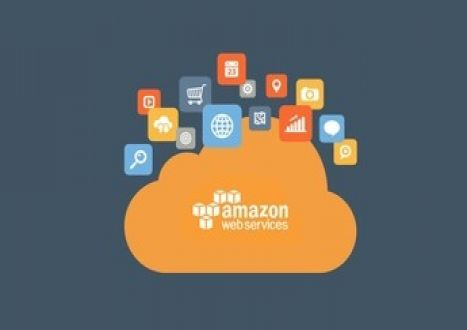


Top Amazon Certification Exams
- AWS Certified Solutions Architect - Associate SAA-C03
- AWS Certified Solutions Architect - Professional SAP-C02
- AWS Certified AI Practitioner AIF-C01
- AWS Certified Cloud Practitioner CLF-C02
- AWS Certified DevOps Engineer - Professional DOP-C02
- AWS Certified Machine Learning Engineer - Associate MLA-C01
- AWS Certified Security - Specialty SCS-C02
- AWS Certified Data Engineer - Associate DEA-C01
- AWS Certified Developer - Associate DVA-C02
- AWS Certified Advanced Networking - Specialty ANS-C01
- AWS Certified Machine Learning - Specialty
- AWS Certified SysOps Administrator - Associate
- AWS Certified CloudOps Engineer - Associate SOA-C03
- AWS-SysOps
Site Search:




